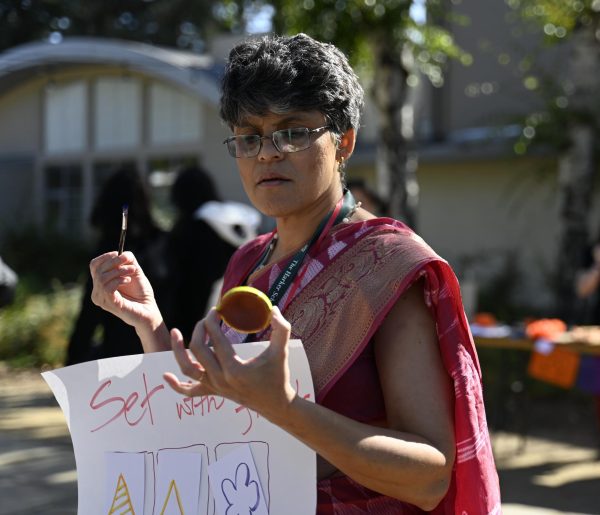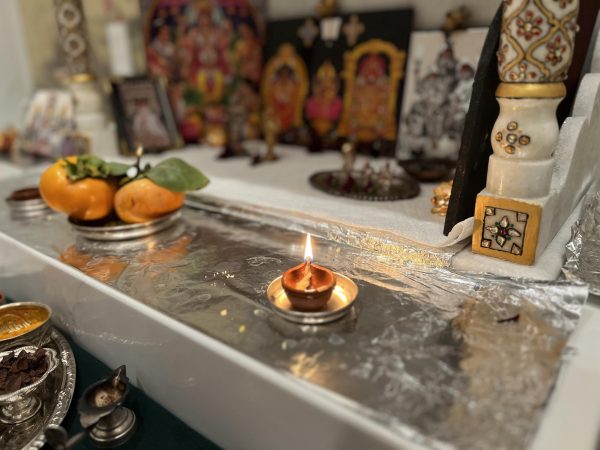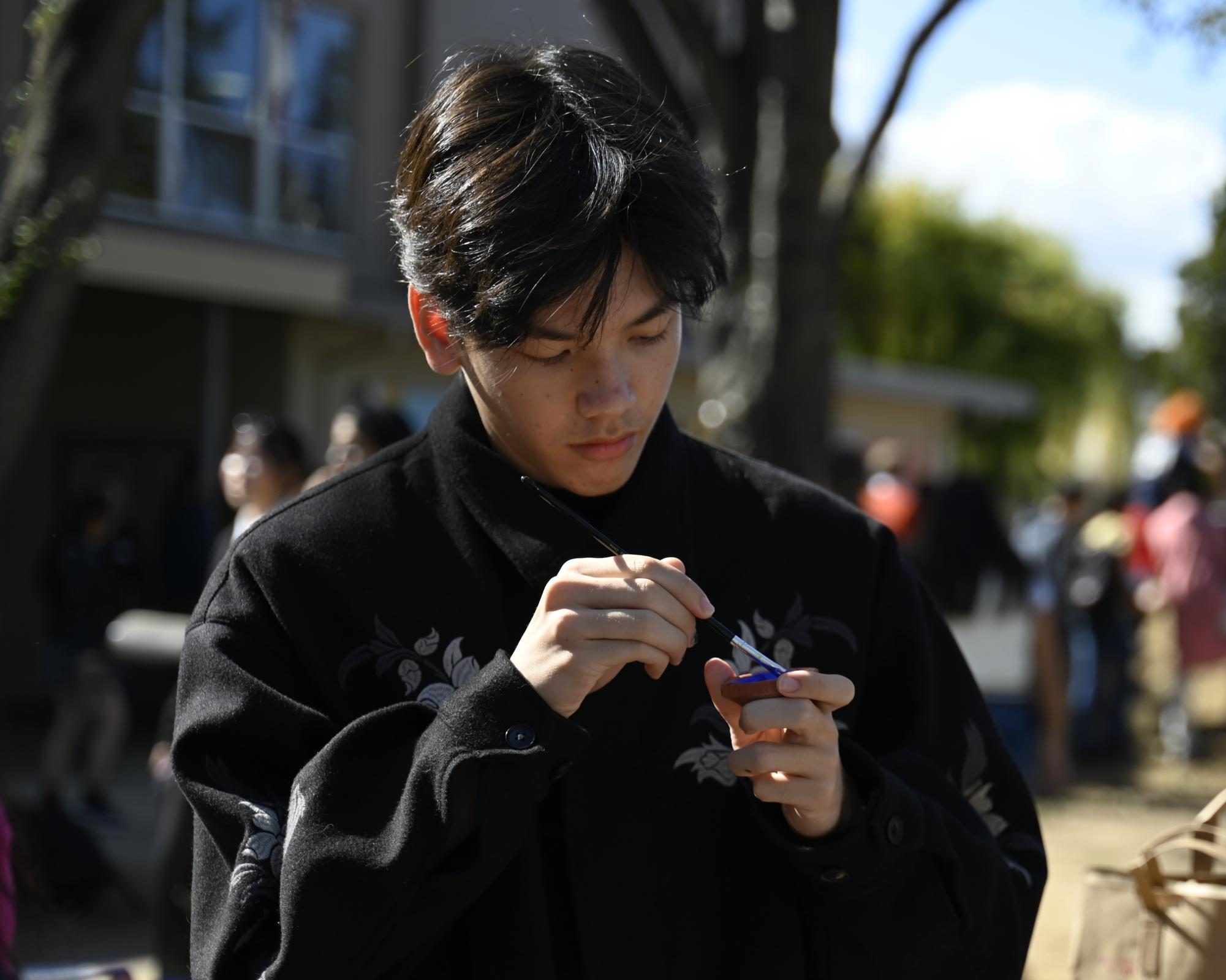A wooden table arranged by the Indian Student Association (ISA) presents an array of radiant paint bottles and forty unadorned clay lamps, known as diyas, beckoning students and teachers to immerse themselves in their festivities. As their brushes meet shades of white, yellow, green, blue and purple, passerbyers personalize each diya with their own flair. With flickering lights soon to enliven each creation, the group manifests the collective and hopeful spirit of Diwali.
Diwali, a religious festival celebrated by Hindus, Jains and Sikhs around the world, was observed from Oct. 31 to Nov. 1. The holiday commemorates the triumph of light over darkness and good over evil, stemming from different legends across religions. The most widely accepted story derives from the Hindu epic Ramayana, which narrates Lord Rama’s journey to rescue his wife from the Demon king Ravana.

“We celebrate the Indian God Rama’s return to the [sacred] city Ayodhya,” ISA co-founder and senior Rushil Jaiswal said. “His town puts up lights to celebrate him as a thank you for defeating Ravana when he comes back. That story brings everyone together. It’s a bright day for everyone, so we’re all excited to do all these new things.”
To honor Lord Rama, families often light diyas. Other customs include setting off fireworks, dressing in new Indian attire, which symbolizes new beginnings and inviting good fortune into one’s life, and sharing traditional foods, like laddus, kheer and puris.
The celebration’s warmth rests upon the unification of families and communities. Cook Rupa Banerjee values these connections as a vital essence of the Diwali experience, hosting a celebration at her house each year where she practices the common tradition of exchanging gifts.
“Diwali is a time to cherish each other’s friendship and family,” Banerjee said. “Diwali is much like Christmas. We make different kinds of desserts and goodies, then we swap it with the neighbors and friends.”
Computer science teacher Anuradha Datar gathers for a meal with her family and dresses up in new clothes on Diwali. While she tries to preserve the memories of her childhood celebrations in India, she has modified her traditions to her neighborhood in the United States.

“We only burst a few firecrackers in our backyard, not ones that are too loud or create smoke,” Datar said. “But back in India, we used to burst a lot of firecrackers, and there was a lot of festive atmosphere around everybody’s homes.”
Many Diwali practices involve rituals between married couples and siblings, reinforcing the commitment and protective bonds between family members. Some of these traditions include husbands presenting gifts to their wives on the third day, as well as sisters applying tilak, a red powder, to their brothers’ foreheads, symbolizing the brothers’ vow to take care of their sisters.
“It’s all about family and extended family getting together and celebrating,” Datar said. “It’s a very fun and festive period.”




